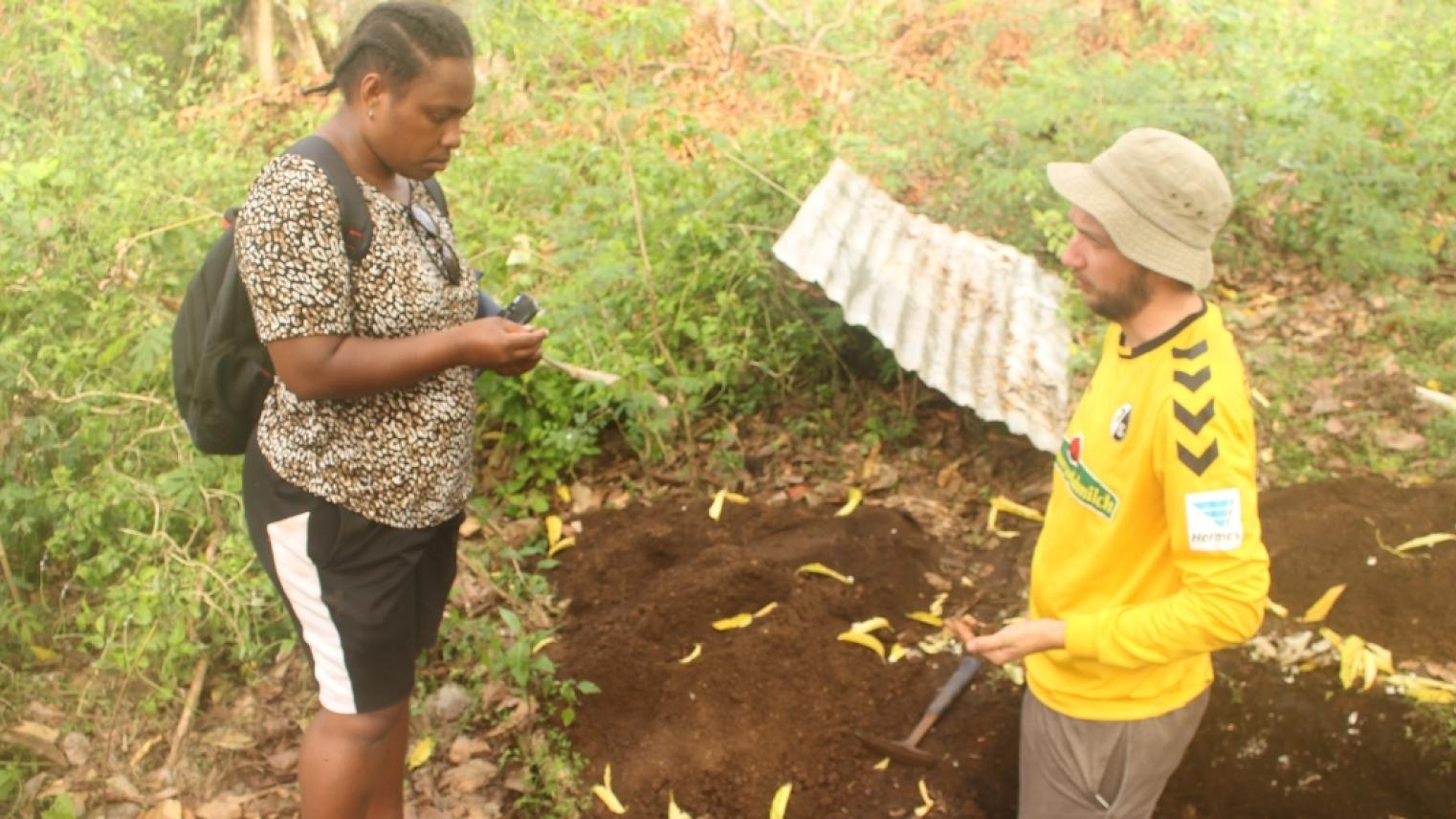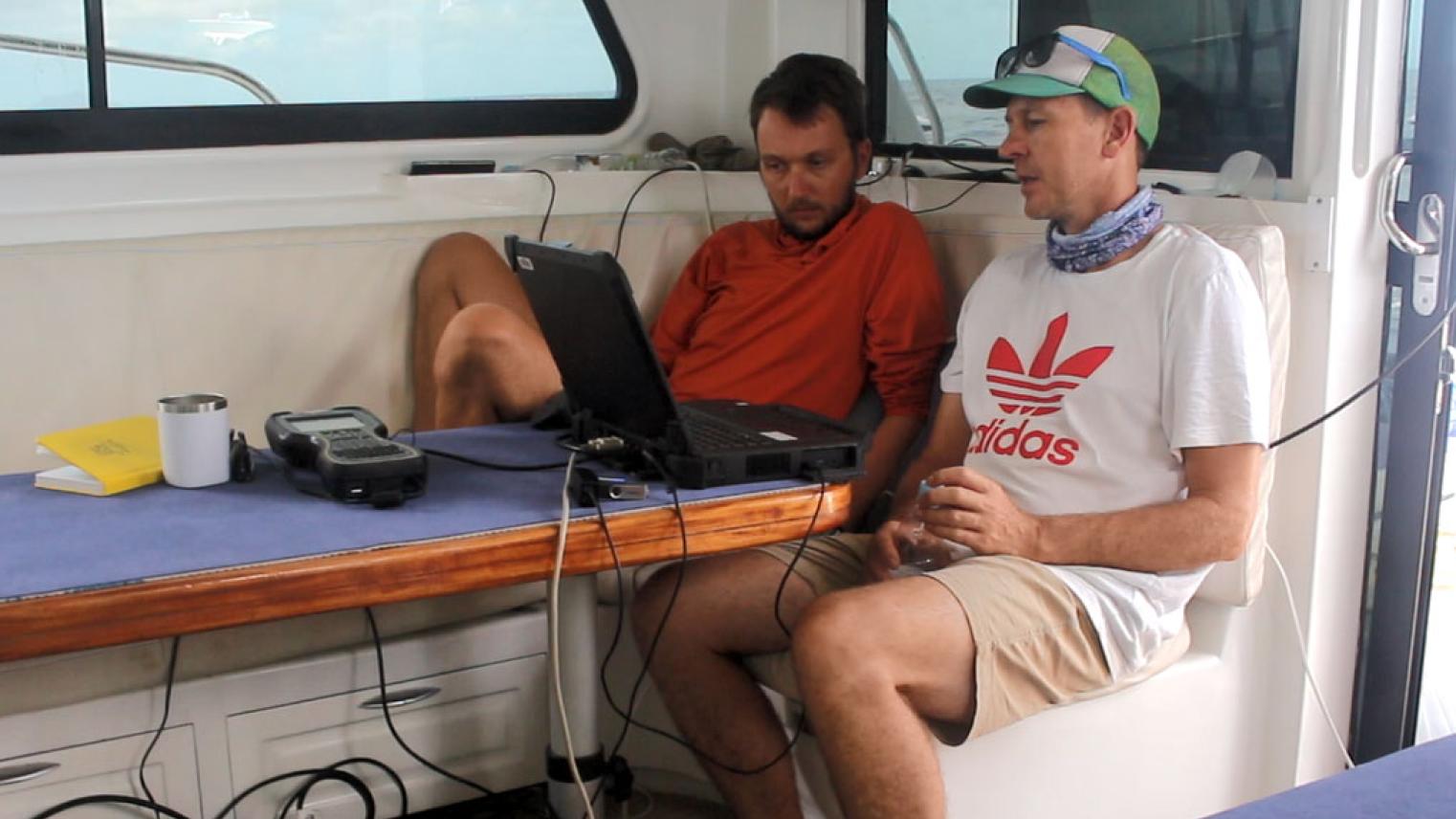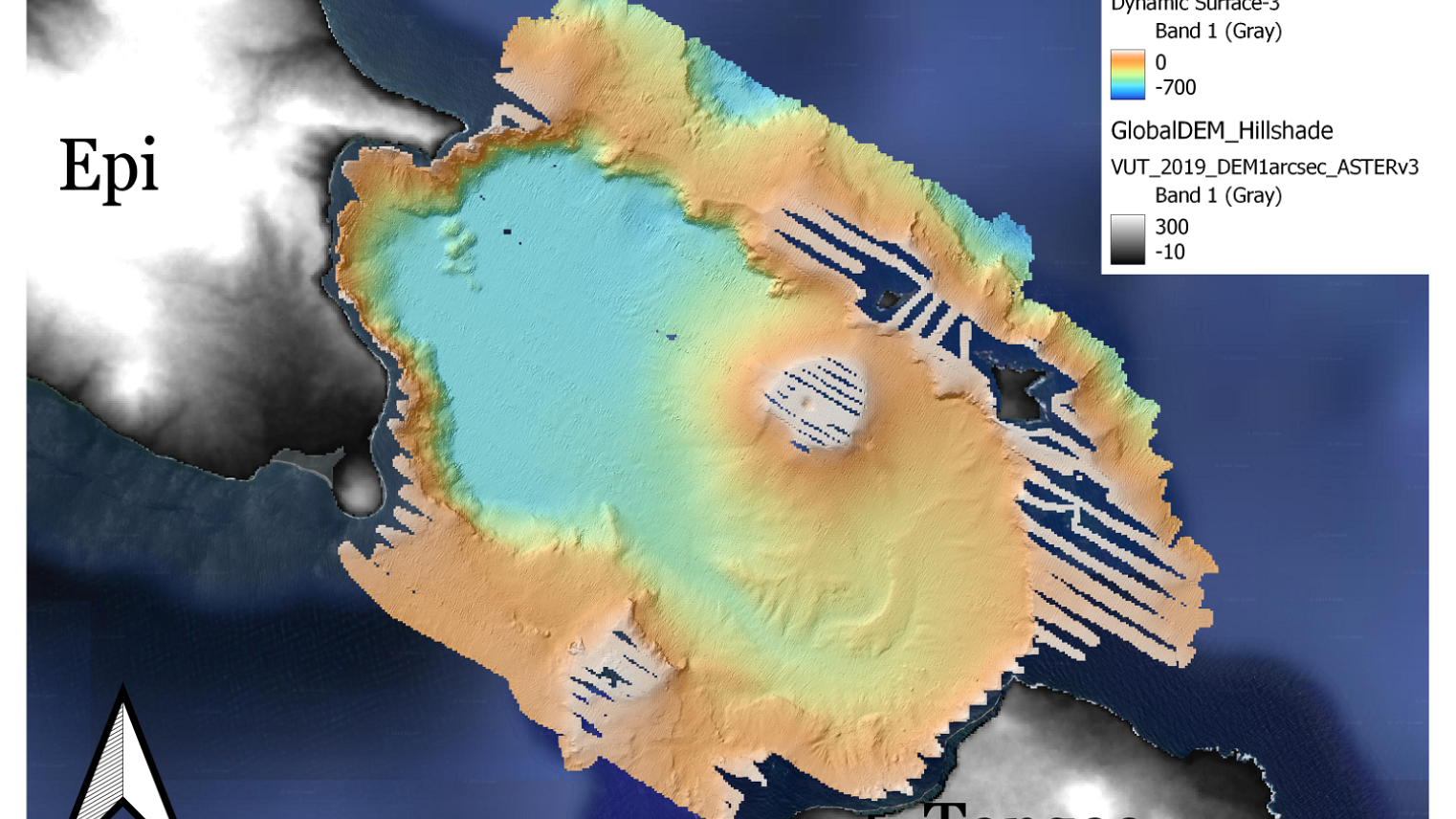Image on the left: Combining work and play, Iarawai Phillip shows off his proud catch during the survey
The fieldwork emphasised for Bedford the resilient nature of communities in Vanuatu.
While our immediate focus was a massive volcanic eruption that occurred 550 years ago, we were present in a region that 10 days earlier had experienced an unprecedented double cyclone. Yet, communities in the islands had largely put all their buildings back together, were feasting on newly harvested yams and were primarily concerned about damage to their kava crops. Cyclones of course are part of life in Vanuatu, and we were welcomed with enthusiasm and support everywhere including on the boat by Captain Andrea Traverso and crew, some of whom had lost the roofs of their homes.
Stay tuned for future chapters in this remarkable story, as the mysteries continue to unfold including excavations on Emae and Tongoa that will help precisely date the eruption and when people resettled!


